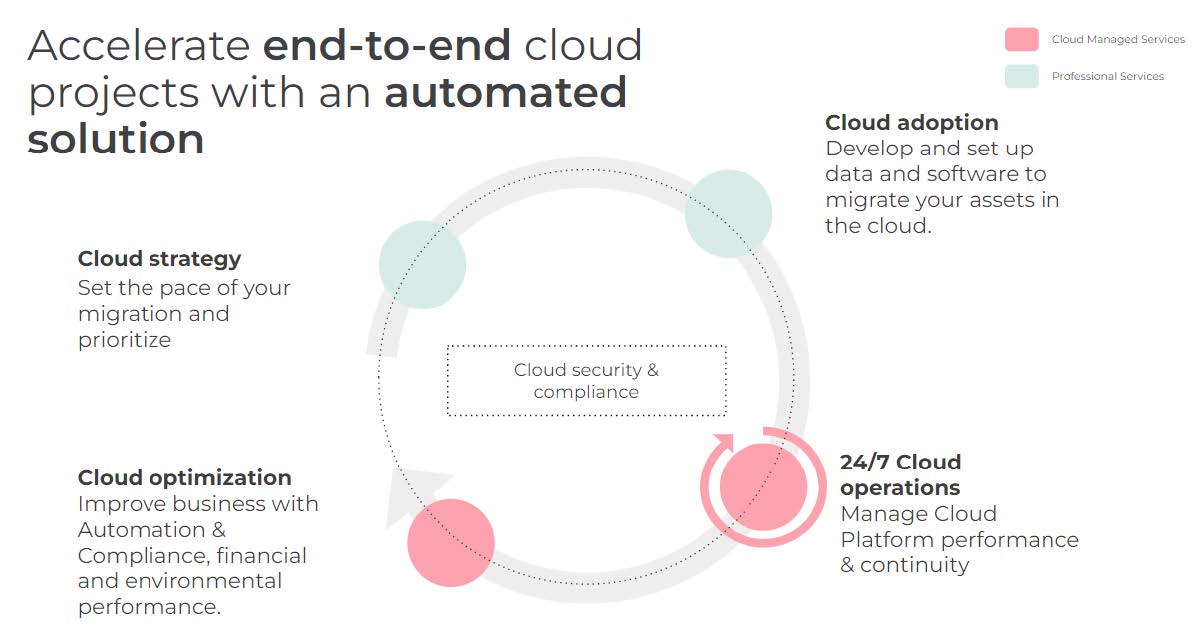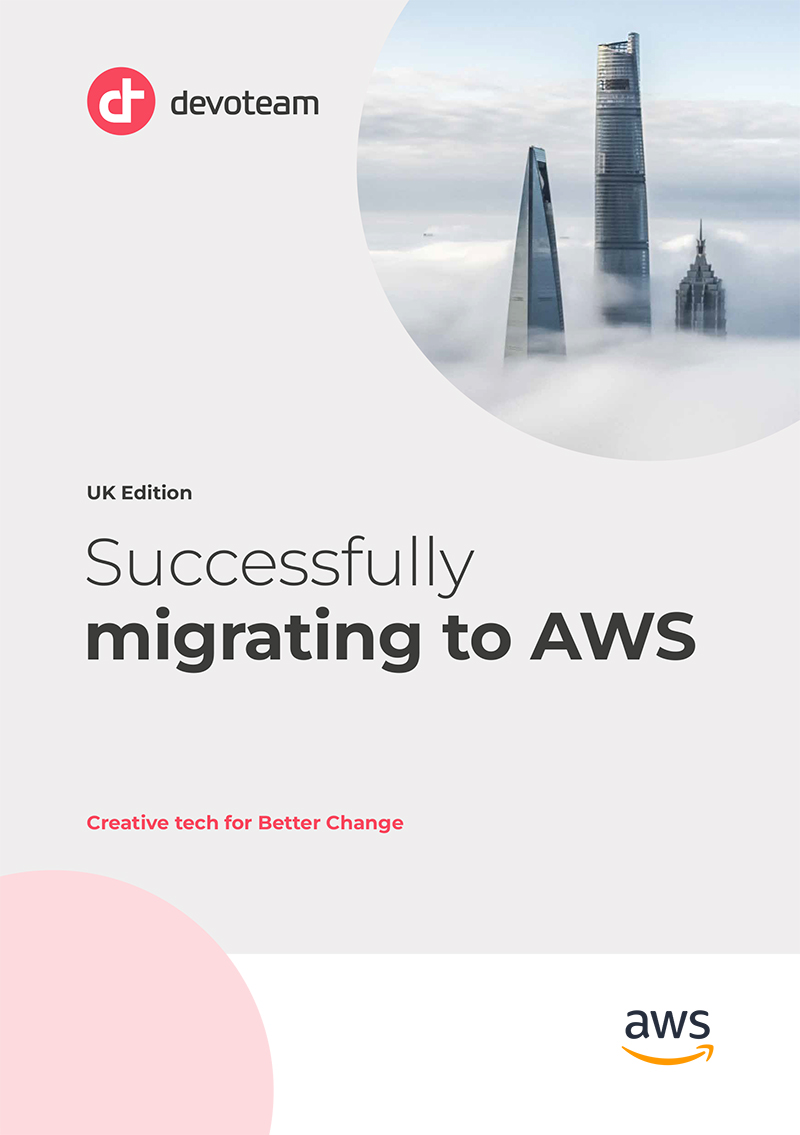The migration of the entire range of applications to the cloud involves a transformation of assets, practices and organisations. If this transformation can be “postponed” after migration operations, it generally begins in parallel with “quick wins”. This transformation is unavoidable for reasons of costs, process, skills, etc. Reshape, impacts of cloud adoption
Application transformation
Migration involves identifying a target for each application and its migration path.
- Remove: applications that will be decommissioned following the migration
- Retain: applications that do not migrate, due to any technological or legal impossibility or are simply not worth migrating
- Repurchase: applications to be purchased in SaaS because they are not part of the differentiating applications linked to the business
- Rehost: applications migrated in Lift and Shift, i.e. imported on AWS without Infrastructure as Code, with Cloud endure type tools Rarely used by our customers, this path brings value when teams are unable to reinstall the application
- Redeploy: applications that will be deployed with IaC on AWS unaltered, with the same architecture and a mainly IaaS target
- Replatform: applications that will be deployed with IaC on AWS, slightly transformed to benefit from AWS managed services
- Refactor: applications that will be deployed with IaaS on AWS, completely transformed to benefit from AWS managed services
These different architecture paths/targets have a direct impact on the tooling that requires implementation, processes, and therefore the skills and IT organisation.
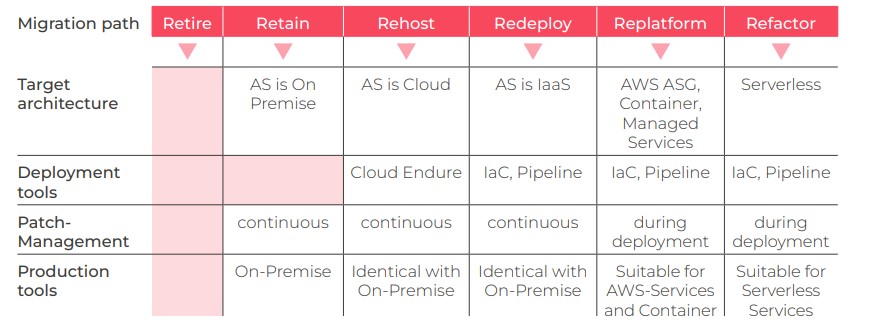
Application Target Architecture and OP-Model
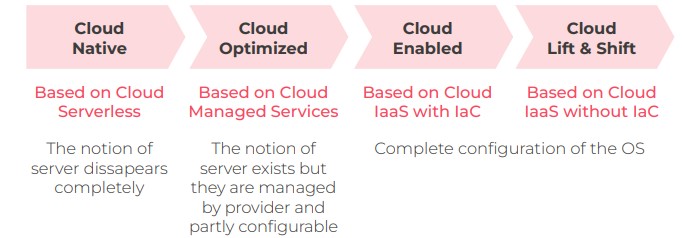

Generally, companies adopt a migration strategy with a single migration path for all applications with the objective of simplifying the management of migration operations and limiting the specific action and measures for each application.
Transforming teams
Migration also means skills progression, and adopting cloud best practices at scale. This requires benchmarking the company’s skills against cloud technologies and practices, and developing individualised training plans aligned with application migration rates.
Training must combine complementary approaches to ensure maximum effectiveness:
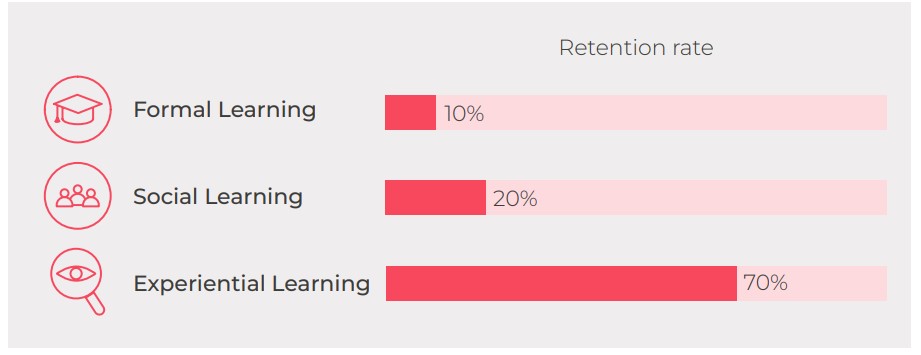
Typical skills progression paths can be defined according to T-shape model (broad knowledge of major cloud-related concepts, combined with the depth of expertise required for the role within the organisation).
Specialities

Technical and philosophycal Core

In parallel with the increase in the competence of resources, it is important to introduce exchange and capitalization measures, such as building a center of excellence (COE) During the migration project, the COE enables the exchange of practices that have proven themselves in connection with the migration program
Organisational transformation
Companies launching a migration program at scale have often been using the cloud for some years, particularly for innovation projects. In this context, a type of organisation called a Cloud Centre of Expertise (CCOE, Cloud Centre of Excellence or CEE, Cloud Enablement Engine) is often in place alongside the siloed organisation that generally governs on-premise operations. In order to have the capacity to support all the migrations at scale, it is important to size this Centre of Expertise in line with the volume of migrations to be managed simultaneously and review the processes that enable development factories to consume cloud services. It is important to delegate as much as possible while keeping control of what is deployed through “policies”, automation, etc.
